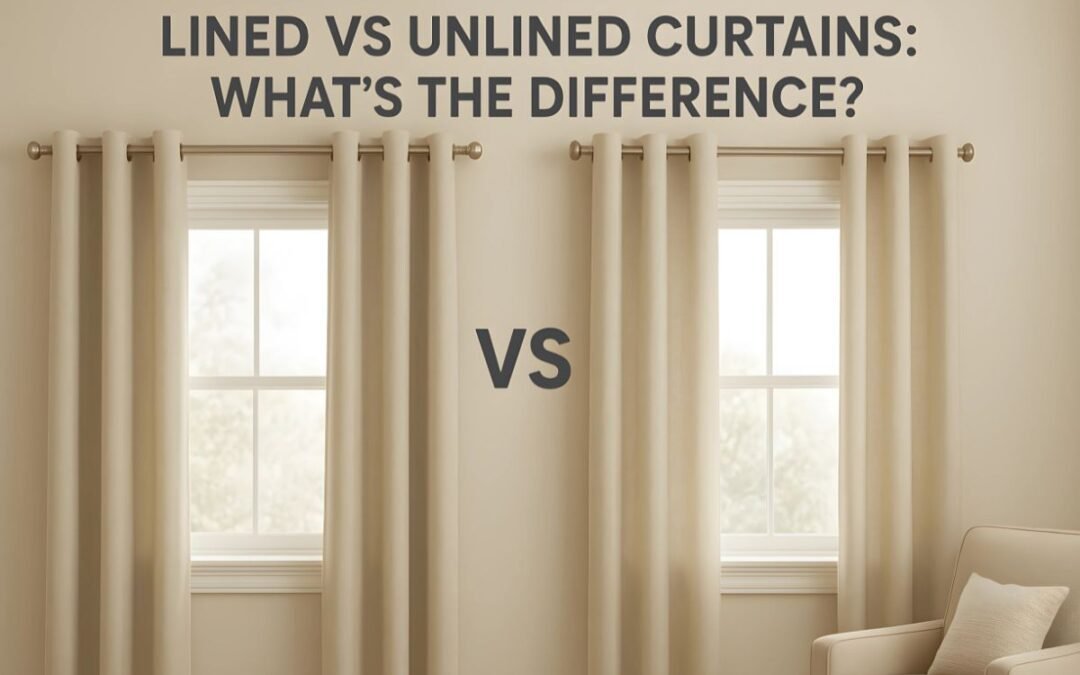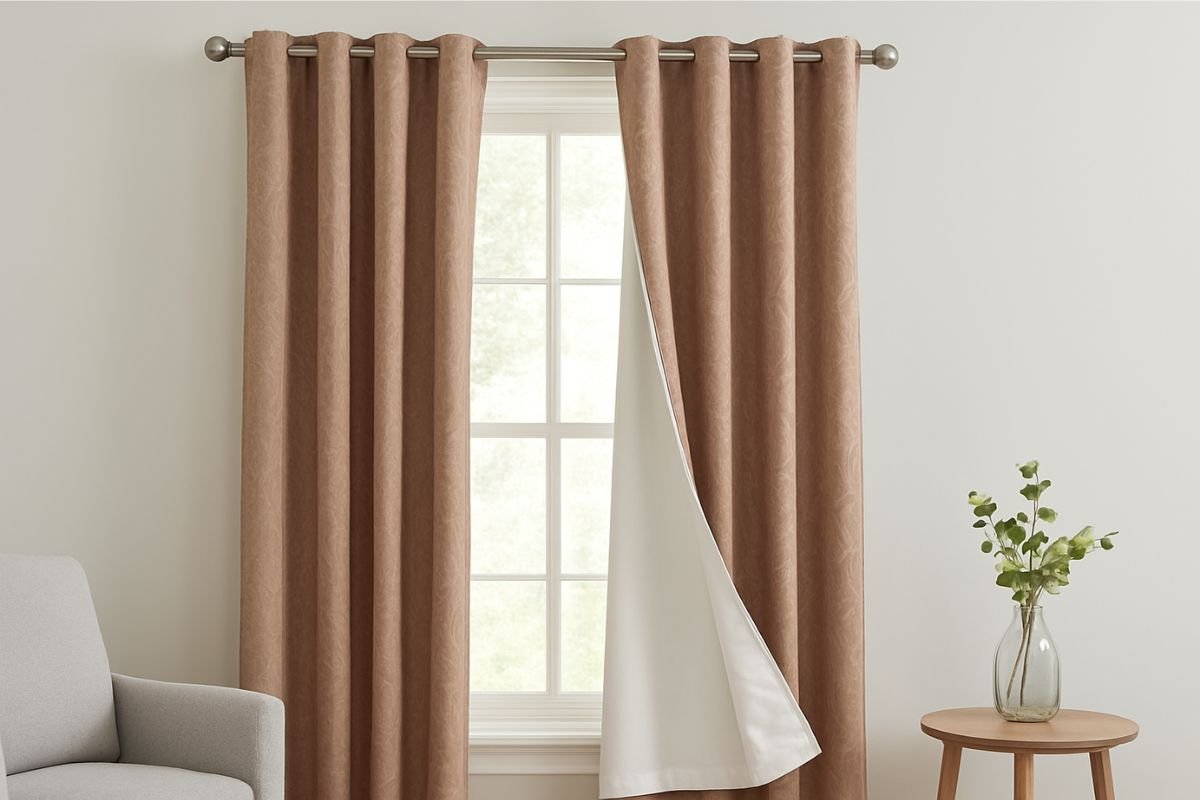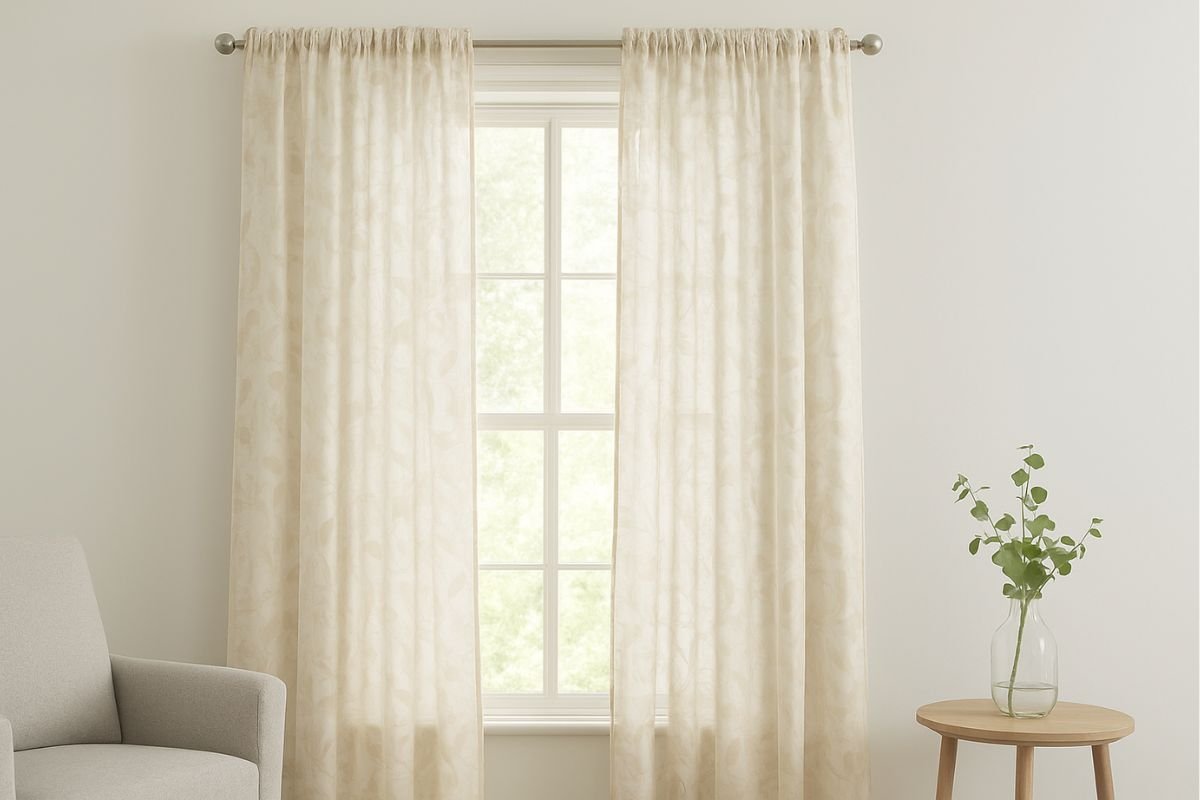You are out there buying the window curtains, and you face a problem. The problem is to choose between lined and unlined curtains. At first glance, they both look quite identical, but there is a difference in performance, function, and durability. An unlined curtain will be lightweight, giving an airy feel. As for the lined drapes, they will offer extra features like insulation, light control, and insulation effect.
So, to conclude the debate on lined vs unlined curtains and the difference between the two, we will explain it in full detail.
- Lined curtains = extra layer(s) behind the decorative fabric, better at blocking light, insulating heat/noise, and protecting the main fabric.
- Unlined curtains = single-layer, lighter, airier, cheaper, and easier to wash, great for styling and letting light in.
What Are Lined Curtains?
Lined curtains come with an extra layer of fabric that is sewn behind their decorative face fabric. This inner fabric lining is not visible when you hang the curtains, but they do offer a significant level of functionality.
- Light control: blackout linings can nearly eliminate incoming light; standard linings reduce glare and soften daylight.
- Thermal help (insulation): a lining traps a pocket of air and slows heat transfer between the window and room, which is helpful both in hot and cold climates. (Window coverings like fitted shades and heavy drapes can make a measurable difference to heat gain/loss).
- Fabric protection: linings shield delicate fabrics (silk, velvet) from direct sun, which fades and weakens fibers.
- Noise absorption: thick linings and interlining increase sound absorption (curtains are not full “soundproofing” but they reduce echoes and some outside noise).
Common lining types:
- Standard (cotton/poly sateen): body, light filtering, protects the face fabric.
- Blackout lining: Has multiple layers or a coated backing that blocks almost all light (95–100% depending on fit and construction). Great for bedrooms/media rooms.
- Thermal / insulated lining: (thicker or multi-layer linings) designed to reduce heat transfer. Good for energy savings.
- Interlining: extra soft layer (often flannel) placed between face fabric and lining for luxury, extra insulation, and drape.
What Are Unlined Curtains?
Unlined curtains are made from a single layer of fabric. They are:
- Lightweight and breathable: They let soft light through and feel airy.
- Decorative: Unlined curtains are ideal where you want filtered light and a softer look (sheers, linen, light cotton).
- Easier to clean & cheaper: These curtains have fewer layers, which usually means machine washing is possible and lower cost.
Use unlined when: you want daytime light, a breezy style, or a low-cost option for living/dining rooms and layered looks (sheer unlined panel + lined drape behind).
Blackout Lining vs Standard Lining: What’s the Difference?
- Blackout lining: specially coated or multi-layer construction. Blocks most or all light when the curtain is closed; best for bedrooms, shift workers, and home cinema. Many good blackout products claim 95-100% light blockage (edge gaps still matter).
- Standard lining: cotton/poly satin-style lining that protects fabric and softens light but will still let daylight through.
Thermal / insulated lining: Energy and Comfort
- Window coverings can make a noticeable difference in heat loss and gain. For example, tightly fitted cellular shades can reduce heat loss in winter by up to 40% in the glass area and result in meaningful heating-energy savings; applied to curtains, well-fitted thermal drapes also reduce heat transfer.
- Real-world tests and guides report thermal curtains and linings can reduce winter heat loss/summer heat gain by roughly 20-40% at the window, depending on fabric, fit, and whether there are pelmets or seals. (Exact numbers vary by product and installation.)
In hot climates (like Dubai or other warm areas), choose light-reflective face fabrics plus thermal or blackout lining and fit curtains to cover the entire window. This reduces heat entering the room and lowers the cooling load.
Pros and Cons of Lined and Unlined Curtains
| Feature | Lined curtains | Unlined curtains |
|---|---|---|
| Light blocking | High (standard vs blackout: from mild dimming to 95–100% with blackout). | Low–Medium (sheers let light through; heavier fabrics may dim). |
| Thermal performance | Good (can reduce window heat transfer ~20–40% depending on fit, lining). | Poor (single layer traps less air, minimal insulation). |
| Noise reduction | Better (thicker/interlined = better absorption; typical reduction 6–9 dB in treated rooms). | Minimal |
| Protection for face fabric | High — lining shields from UV and wear. | Low — more prone to fading in direct sun. |
| Weight & hardware | Heavier — needs sturdy rods & brackets | Light — easiest to hang |
| Maintenance | Often dry-clean recommended for coated blackouts or delicate fabrics; some standard-lined curtains can be machine washed (check label). | Usually machine-washable (depends on fabric) |
| Price | Higher (more material & sewing) | Lower |
Design & style: How To Choose Visually?
A curtain design is not just about its function, but how it looks. A pair of double-layered curtains offers better flexibility. Custom-lined curtains are made to be an exact fit for your window size. Ready-made lined curtains are cheaper and available in a variety of fabric options. For hotels and office spaces, lined curtains are the preferred choice due to their professional look and high durability. As for homes, you can use either lined curtains or unlined curtains.
Factors To Consider When Buying Lined Or Unlined Curtains
There are a few factors you need to consider before you buy lined or unlined curtains.
1. The first thing is the cost, with the lined option being more expensive, but it offers higher value.
2. The second thing is durability, with linings offering a higher lifespan for the main fabric.
3. You must consider privacy because unlined curtains won’t offer much of it.
4. Your choice of curtains must meet the climate needs of your area. For instance, thermal or blackout-lined drapes are recommended for Dubai living spaces.
5. You must factor in the cleaning & maintenance of the fabric, which is machine-washable or requires dry cleaning.
Read Also: Blinds vs. Curtains: Which is the Best Choice for Your Space
Will Lined Curtains Save Money on My Electricity Bill?
They can help by reducing heat gain in summer and heat loss in winter at the window. Savings depend on climate, window type, and usage; window coverings like well-fitted shades and drapes are shown to reduce window heat transfer and can contribute to lower HVAC use.
Can I Add Lining Later to Existing Curtains?
Yes, many curtain tailors and DIY kits add linings, and this is a cost-effective way to upgrade performance.
Do blackout curtains really make a room dark?
Yes, good blackout linings block most light (95–100%), but small edge gaps may let thin strips in. Fit carefully.




